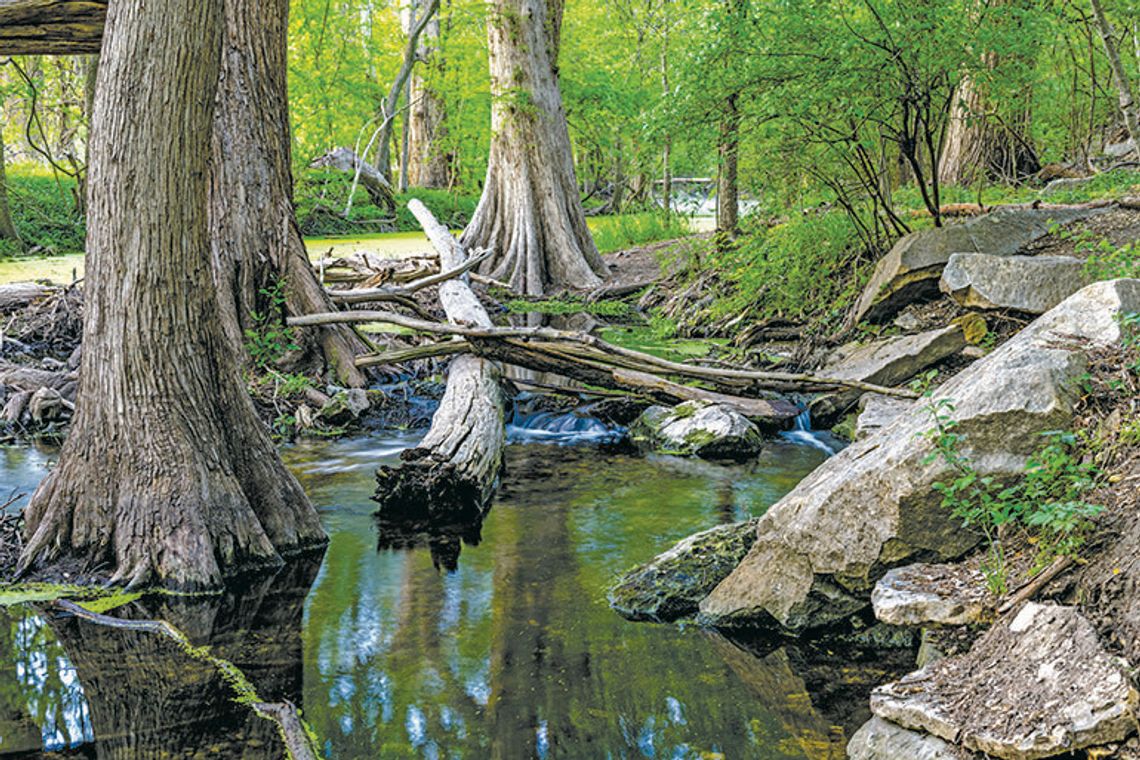CREEKSIDE AT THE CIBOLO
There is a common degree of function within all lands, great and small. The functionality question runs incredibly deep when considering what you would like to see, use or produce.
A yard full of Zoysia is functional aesthetically, but not much more. Many of us live within the urban/wildland interface, which points toward a multifunctional management approach that is more “natural” at heart — a space or place where many things grow and hold the soil in place.
At this point, I would like to introduce you to the grand theory of Multifunctional Landscapes.
Multifunctionality addresses the “one use” aspect of everything on the land and possibly a “rewilding” of certain areas within it.
Some people might take this theory to task because it seems “messy” or “unkept” to the urban eye. The “unkept” appeal can vary in many ways depending on management styles and use cases. The bottom line of a multifunctional landscape is appealing to as many different species of flora and fauna as possible.
Access and usage are a major component of the multifunctional approach since we all gravitate to the “wilder areas.” Access to creeks, fields, forests and marshes can be styled in a well-thought-out manner without limiting the overall functionality of the natural system.
Strictly limiting access to wild areas can create a sense of rigidity and a lack of adventure. Everyone loves a bit of adventure sprinkled with a sense of exploration and a slight hint of the unknown. It is the natural inquisitive nature of humans to seek these magical places and share experiences.
Some of the more careful considerations when working with the land in the Texas Hill Country might include erosion control, Juniper management and riparian diversification. Dirt and water should remain on the land and not in the creek.
A properly functioning creek zone will remain clear and offer a gentle rise after a significant rainfall event. We all desire a subtle reorganization of the creek after a nice rain event and groan about a “scrubbing event.”
Every watercourse can vary greatly depending on elevation change, volume and parallel land usage. To assuage the effects of erosion along a watercourse is to increase the multifunctionality of native flora.
Manage your access points to prevent overuse and downslope erosion. Expand your riparian areas into “soft edge” floral communities with careful consideration of a healthy distance from the watercourse (150 yards can be considered industry standard).
Soft edge communities are well known for promoting a richness of flora and fauna, creating a “loafing” habitat, and increasing soil moisture content and cooler temperatures.
Soft edge is everything — if you do not have a “soft edge,” create one.
The back fence, old fence lines or an underused segment of the yard or field is a perfect place to start. My back fence zone has become a microclimate wildlife preserve of sorts. If you are on the production side of the equation, pull the plow away from traditional lines of usage (fences and creek shoulders) to allow for regrowth; cross-fence your property when considering livestock rotation; and offer centrally located watering stations.
“Small-area farming” uses many disciplines of multifunctionality to maximize space, soil and access while increasing production — a closed loop, if you may, managing input while enhancing output.
So, with all these ideas and multifunctionality concepts thrown out there, the question is ... what to do next?
Less is more in most cases, which eventually leads towards great Capris of Nature. Well-thought-out plans work on paper but in many cases, nature works on a different schedule.
I will leave you with a quote that applies to pretty much everything: “The health of our community depends on the quality of our conversations.” Never forgo a meaningful conversation and I will see you in the woods.
David Touchon is Land Manager for The Cibolo Nature Center









Comment
Comments